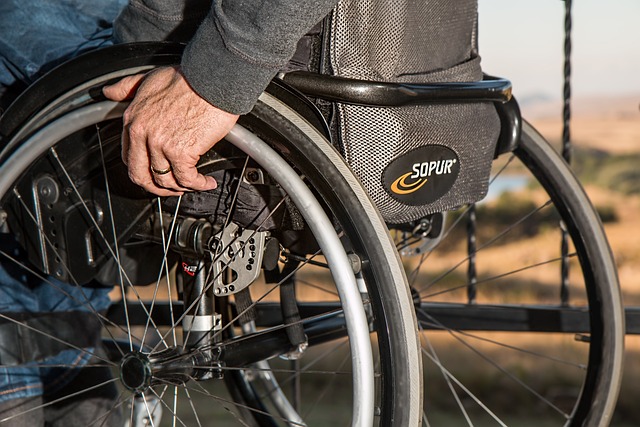Beyond the Ramp: How a Mobility Van Can Transform Your Life
Don't let mobility challenges keep you off the road. A modern, customized handicap van isn't just transportation, it's your gateway to independence. Discover the key features, financing secrets, and conversion options that will put you back in the driver's seat.

A mobility van is not just a vehicle—it’s a gateway to reclaiming autonomy and participating fully in daily life. Whether you’re navigating medical appointments, returning to work, or simply visiting friends and family, the right accessible vehicle removes barriers that once seemed insurmountable. The journey to finding and customizing your ideal mobility van involves understanding conversion technologies, exploring financial assistance programs, and selecting features that prioritize both comfort and safety.
Defining Your Freedom: Understanding Conversion Types
When selecting a mobility van, one of the most fundamental decisions involves choosing between ramp and lift entry systems. Each conversion type offers distinct advantages depending on your specific needs, physical capabilities, and lifestyle requirements.
Ramp conversions typically feature either fold-out or in-floor ramp systems. Fold-out ramps deploy from the side or rear of the vehicle, offering a straightforward, cost-effective solution that works well for manual wheelchair users and those with caregivers. In-floor ramps, which stow beneath the vehicle floor when not in use, preserve interior space and provide a cleaner aesthetic. These systems generally accommodate wheelchair users who can navigate gentle inclines independently or with minimal assistance.
Lift conversions utilize powered platform lifts that raise and lower wheelchair users into the vehicle. These systems are particularly beneficial for individuals using heavier power wheelchairs, those with limited upper body strength, or anyone who finds ramp navigation challenging. While typically more expensive than ramp systems, lifts eliminate the physical effort required to ascend an incline and can handle greater weight capacities.
The choice between ramp and lift often comes down to personal mobility level, wheelchair type, caregiver availability, and budget considerations. Test-driving both conversion types before making a final decision helps ensure the system aligns with your daily reality.
The Smart Buyer’s Guide: Financing, Grants, and Insurance Secrets
The financial aspect of acquiring a mobility van can feel overwhelming, but numerous funding sources exist to help offset costs. Understanding your options transforms what seems impossible into achievable.
Financing options include traditional auto loans, specialized mobility vehicle financing programs, and manufacturer financing deals. Many lenders offer extended loan terms for adaptive vehicles, recognizing their essential nature. Credit unions and banks familiar with adaptive equipment often provide competitive rates and flexible terms.
Grant programs represent another valuable resource. Organizations like the National Mobility Equipment Dealers Association (NMEDA) maintain directories of grant opportunities. Veterans may qualify for assistance through the VA’s Automobile Adaptive Equipment program or Automobile Allowance Grant. Non-profit organizations, charitable foundations, and state vocational rehabilitation programs also provide funding for eligible individuals.
Insurance considerations deserve careful attention. Some health insurance plans, Medicare Advantage plans, and Medicaid programs may cover portions of vehicle modifications, though coverage varies significantly by state and plan. Documenting medical necessity through physician letters strengthens insurance claims. Additionally, exploring whether your state offers sales tax exemptions for adaptive vehicles can yield substantial savings.
Vocational rehabilitation services often fund mobility vans when vehicle access directly relates to employment. If transportation barriers prevent you from working or attending job training, contacting your state’s vocational rehabilitation office could unlock funding opportunities.
Understanding Mobility Van Costs and Options
Mobility van pricing varies considerably based on conversion type, vehicle model, and customization level. Below is a general comparison of typical costs and providers in the accessible vehicle market.
| Conversion Type | Typical Provider Examples | Cost Estimation |
|---|---|---|
| Side-Entry Ramp Conversion | BraunAbility, VMI (Vantage Mobility) | $25,000 - $45,000 |
| Rear-Entry Ramp Conversion | Rollx Vans, AMS Vans | $20,000 - $38,000 |
| Platform Lift Conversion | Bruno Independent Living, Harmar Mobility | $30,000 - $50,000 |
| Full-Size Van Conversion | Commercial Vans, Freedom Motors | $45,000 - $80,000 |
| Minivan Conversion | Chrysler Pacifica, Honda Odyssey conversions | $40,000 - $65,000 |
Prices, rates, or cost estimates mentioned in this article are based on the latest available information but may change over time. Independent research is advised before making financial decisions.
Customizing Your Ride: Essential Features for Comfort and Safety
Beyond the basic conversion, numerous customization options enhance both comfort and safety. Thoughtful feature selection transforms a functional vehicle into a truly personalized mobility solution.
Seating configurations deserve careful consideration. Removable seats provide flexibility for transporting multiple passengers or additional wheelchairs. Captain’s chairs with swivel or transfer capabilities assist users who can transfer from their wheelchair to a vehicle seat. Power seat bases allow for positioning adjustments that reduce fatigue during longer journeys.
Securement systems ensure wheelchair stability during travel. Q’Straint and Sure-Lok systems represent industry standards, offering either manual tie-down straps or automated docking systems. Automated docking eliminates the need for manual securement, saving time and reducing physical strain on caregivers.
Climate control modifications, including rear heating and air conditioning systems, maintain comfort for wheelchair-positioned passengers. Auxiliary controls allow wheelchair users to adjust temperature settings independently.
Safety enhancements should never be overlooked. Backup cameras, parking sensors, and blind-spot monitoring systems compensate for reduced visibility caused by conversion modifications. Interior lighting improvements ensure safe entry and exit during evening hours. Emergency exit protocols and equipment provide peace of mind for all passengers.
Accessibility extends to driving controls for those who wish to operate the vehicle independently. Hand controls, left-foot accelerators, steering modifications, and reduced-effort braking systems enable drivers with various physical limitations to maintain their driving independence.
Making Your Decision With Confidence
Selecting and customizing a mobility van represents a significant investment in independence and quality of life. By thoroughly understanding conversion types, exploring comprehensive financing options, and thoughtfully selecting features that address your specific needs, you position yourself to make a decision that serves you well for years to come. Working with certified mobility equipment dealers, consulting with occupational therapists, and test-driving multiple configurations ensures your final choice truly transforms your daily experience and opens new possibilities for engagement with the world around you.




